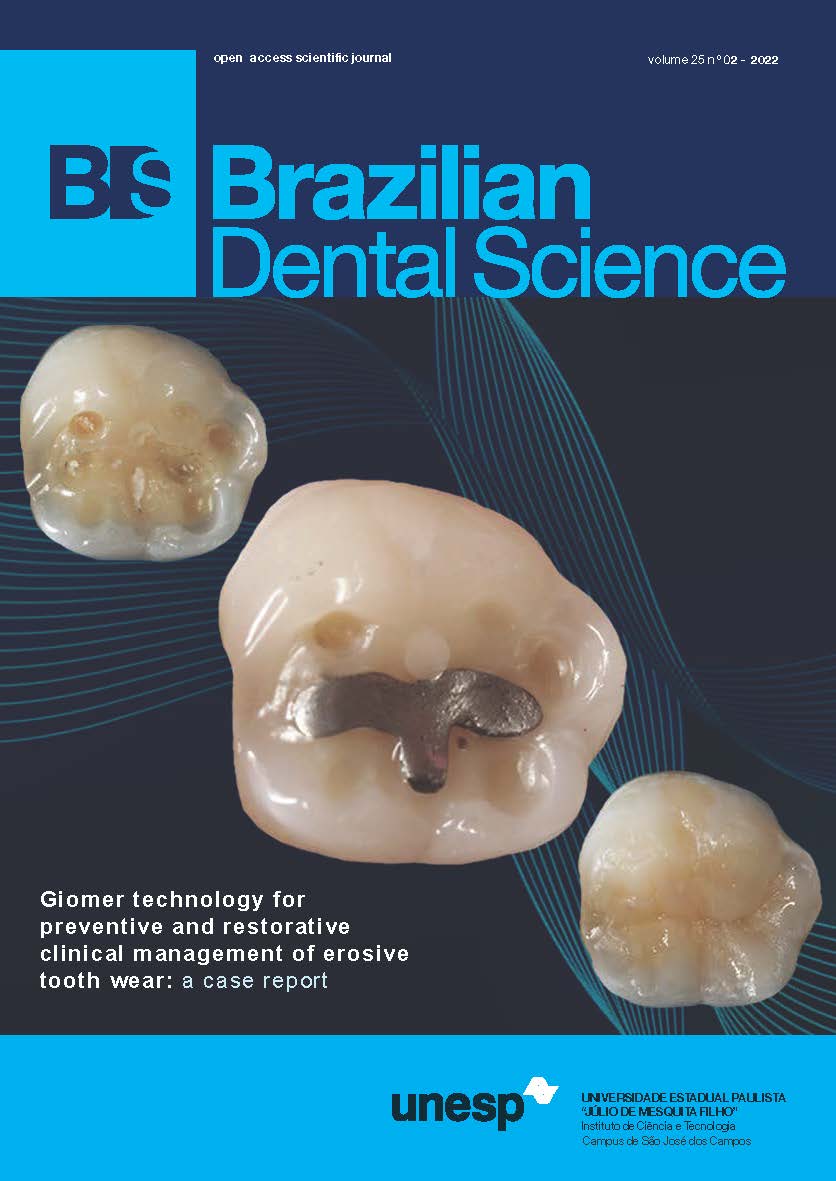Effect of delayed light-curing on solubility, color stability, and opacity of Fuji II LC glass ionomer cement: original article
DOI:
https://doi.org/10.4322/bds.2022.e2467Abstract
Objective: Resin-modified glass ionomer (RMGI) cements are among the commonly used restorative materials in
low stress-bearing areas and also for temporary restorations. The competition between acid-base reactions and
light polymerization reactions in delayed curing of RMGIs can affect their physical and mechanical properties,
as well as their degree of conversion. Since solubility, color stability, and opacity are among the main physical
properties affecting the durability and clinical service of RMGI restorations, this study aimed to assess the effect
of delayed curing on solubility, color stability, and opacity of Fuji II LC RMGI. Material and Methods: This in
vitro, experimental study evaluated 80 Fuji II LC RMGI specimens (10 specimens per each in 4 groups) in terms
of solubility, color stability, and opacity at 6 months later. Specimens were cured immediately or were cured
with 1, 5 and 10 min delay. Results: Maximum solubility and minimum change in opacity and color stability
at 6 months were noted in the group with delayed curing by 10 min. A significant difference was noted in the
solubility of specimens cured after 10 min and 1 min. Significant differences were also noted in the opacity and
color stability of specimens cured after 10 min and all other groups (P < 0.05). Conclusion: Delayed curing
by 1 min decreased the solubility of RMGI specimens compared with immediate curing or curing after 5 min.
Although this difference did not reach statistical significance. Color stability and changes in opacity are mainly
influenced by the acid-base reactions rather than polymerization reactions.
KEYWORDS
Glass Ionomer cement; Fuji II LC cement; Solubility; Color; Opacity.
Downloads
Downloads
Published
How to Cite
Issue
Section
License
Brazilian Dental Science uses the Creative Commons (CC-BY 4.0) license, thus preserving the integrity of articles in an open access environment. The journal allows the author to retain publishing rights without restrictions.
=================




























